In another example of warming relations between the two space superpowers, in October 1969 two Soviet cosmonauts paid a two-week visit to the United States, spending time at the Manned Spacecraft Center (MSC), now the Johnson Space Center in Houston, the North American Rockwell (NAR) facility in Downey, California, the Jet Propulsion Laboratory (JPL) in Pasadena, California, the Langley Research Center in Hampton, Virginia, and several other sites of interest including Disneyland and the Grand Canyon. They declined an invitation to visit the Kennedy Space Center, citing they lacked the authority to extend a reciprocal invitation for American astronauts to visit the Baykonur Cosmodrome. This trip came just three months after NASA astronaut Frank Borman and his wife Susan visited the Soviet Union, including the Gagarin Cosmonaut Training Center in Star City outside Moscow.
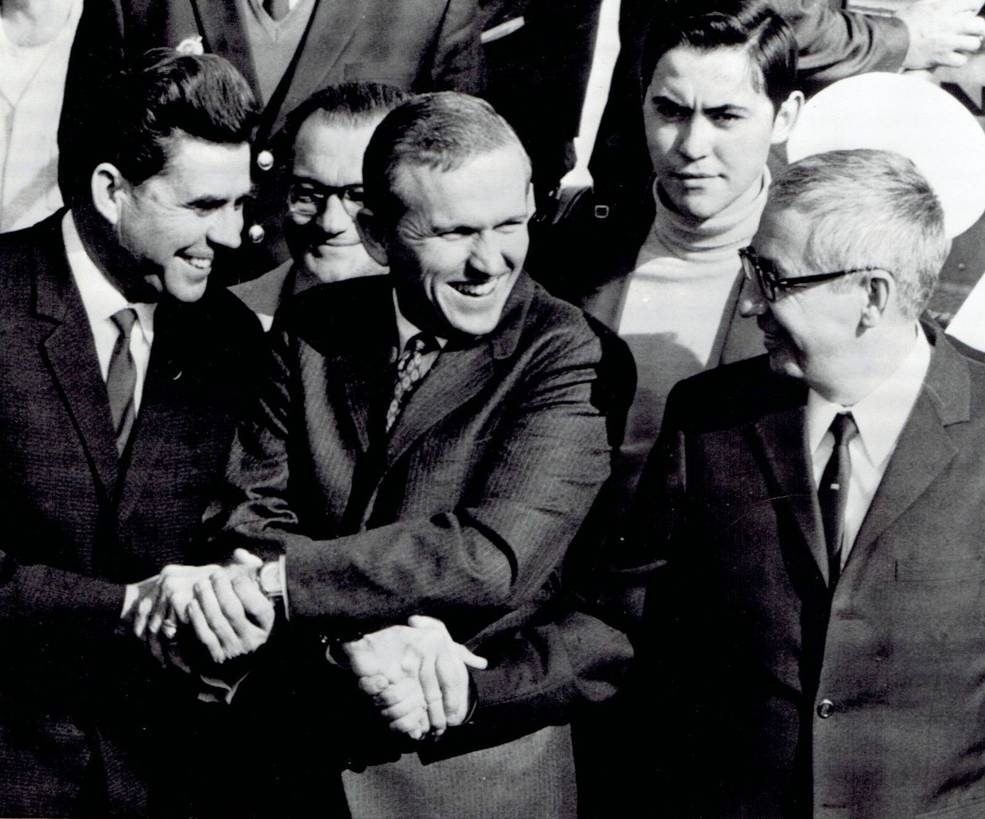
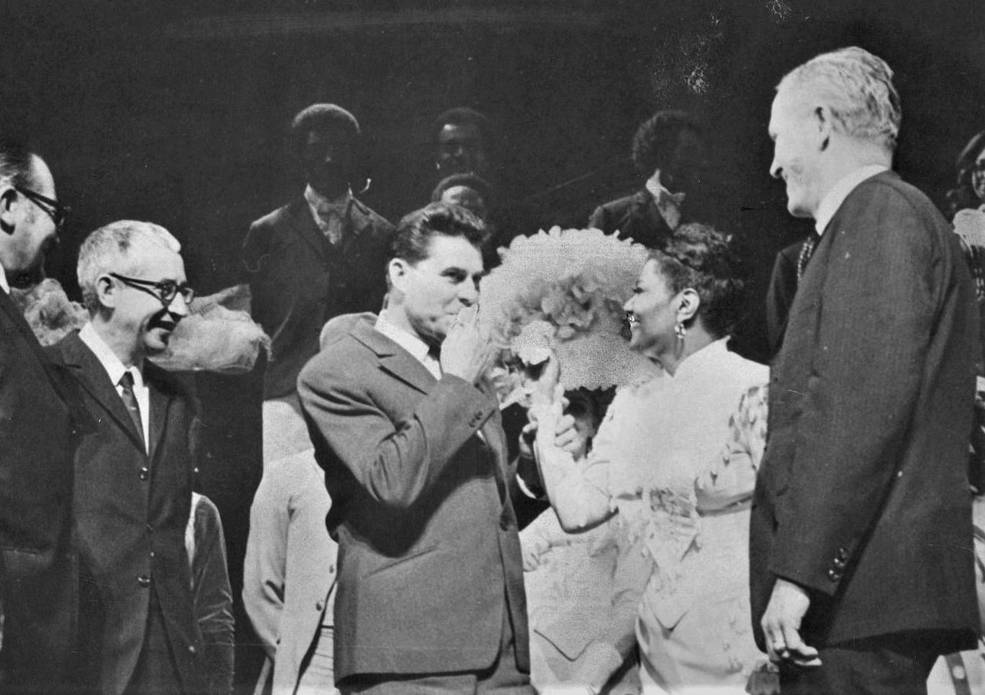
Left: Borman (at center) greeting Beregovoi (at left) and Feoktistov (at right) at New York’s JFK Airport. Right: After a performance of Hello Dolly! (left to right) Feoktistov, Beregovoi, Bailey, and Borman.
The Soviets accepted Borman’s return invitation for cosmonauts to visit the United States. Georgi T. Beregovoi, a veteran of the October 1968 Soyuz 3 mission, accompanied by his wife Lydia and son Viktor, and Voskhod 1 veteran and spacecraft designer Konstantin P. Feoktistov arrived at New York’s John F. Kennedy (JFK) Airport on Oct. 20, 1969, where Borman warmly greeted them. That evening, the two cosmonauts enjoyed the Broadway musical Hello Dolly! and met the show’s star Pearl Bailey on stage after the performance.
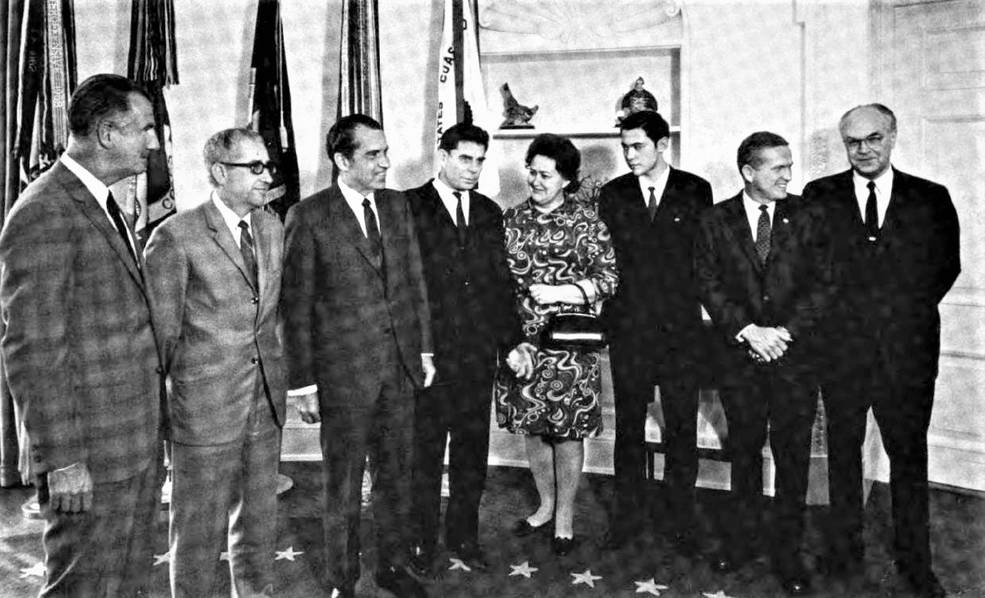
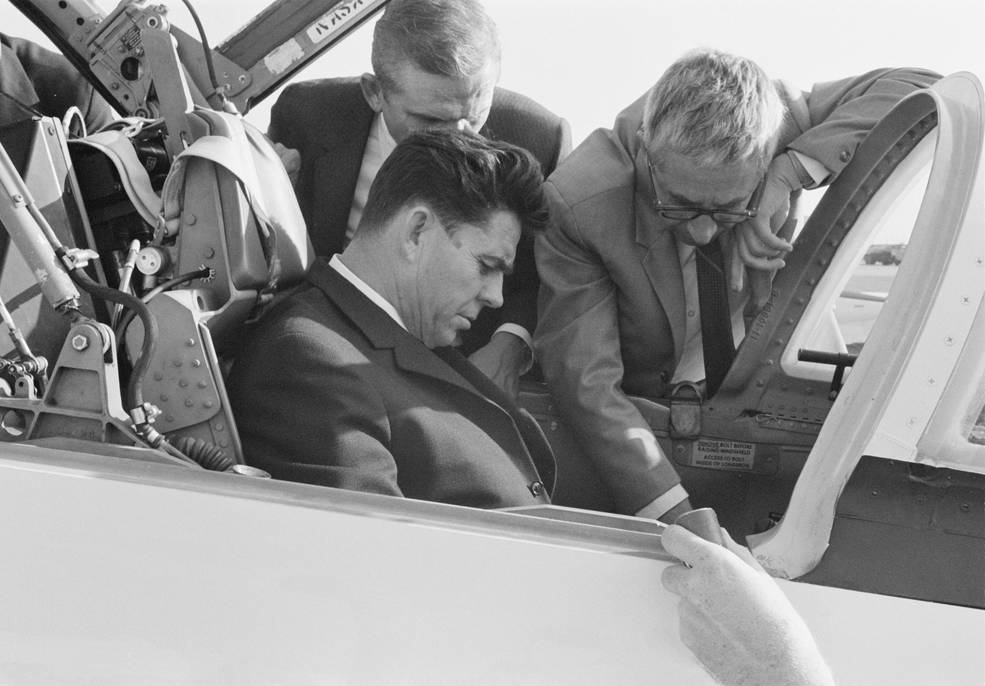
Left: Visit to the White House (left to right) Agnew, Feoktistov, Nixon, Beregovoi, Mrs Beregovoi, son Viktor, Borman, Dobrynin. Right: Beregovoi sitting in a T-38 at Ellington AFB, as Borman (left) and Feoktistov look on. Credits: White House Press Office.
The next morning, Beregovoi and Feoktistov accompanied by Borman left New York for Washington, DC, where they met briefly with President Richard M. Nixon, Vice President Spiro T. Agnew, and Soviet Ambassador to the United States Anatoliy F. Dobrynin at the White House. President Nixon presented the two cosmonauts with presidential pens and inauguration medals. Then it was off to Houston for two days of visits and meetings at MSC. After arriving at nearby Ellington Air Force Base (AFB), Beregovoi and Feoktistov had the opportunity to inspect and sit in a T-38 Talon training aircraft, with Borman demonstrating its features. During their MSC visit, Flight Director Glynn S. Lunney toured them through Mission Control, explaining the various positions in the Mission Operations Control Room (MOCR). Astronaut Jack L. Swigert demonstrated the Apollo Command Module (CM) simulator, which Beregovoi tried out. The cosmonauts received a detailed briefing on the Apollo lunar spacesuit, and in the Lunar Receiving Laboratory’s conference room they had a chance to examine a Moon rock returned by Apollo 11. On Oct. 23, Beregovoi and Feoktistov gave an unprecedented press conference at MSC, with Borman joining them. A group of 30 astronauts held a dinner in their honor.

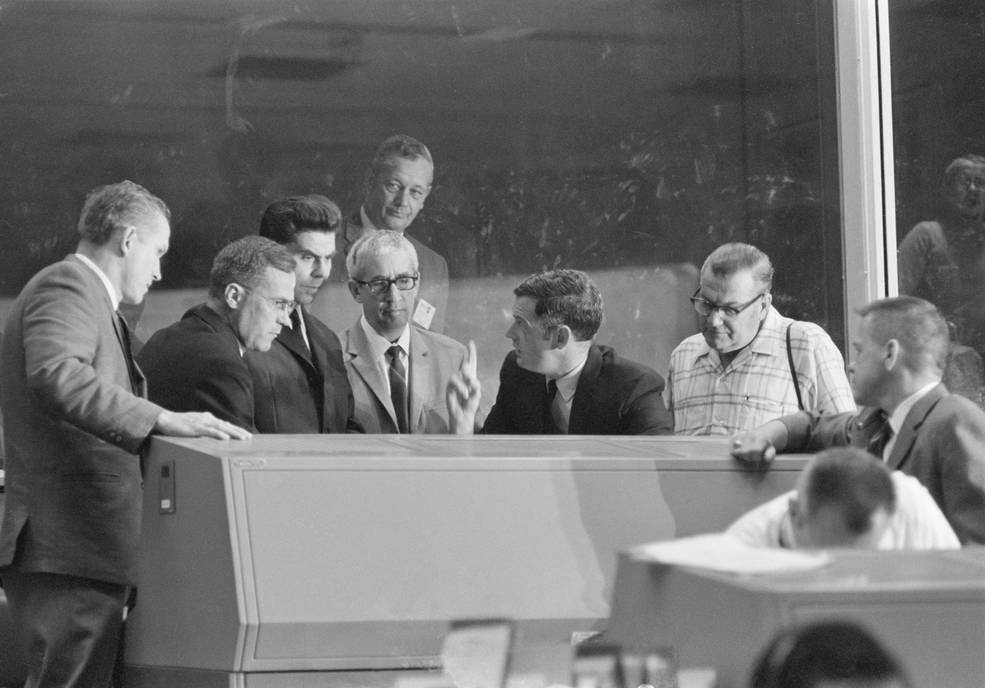
Left: Lunney (second from left) provides a tour of the MOCR to Beregovoi and Feoktistov. Right: Borman (at left) looks on as Lunney describes one of the consoles in the MOCR to Beregovoi and Feoktistov.

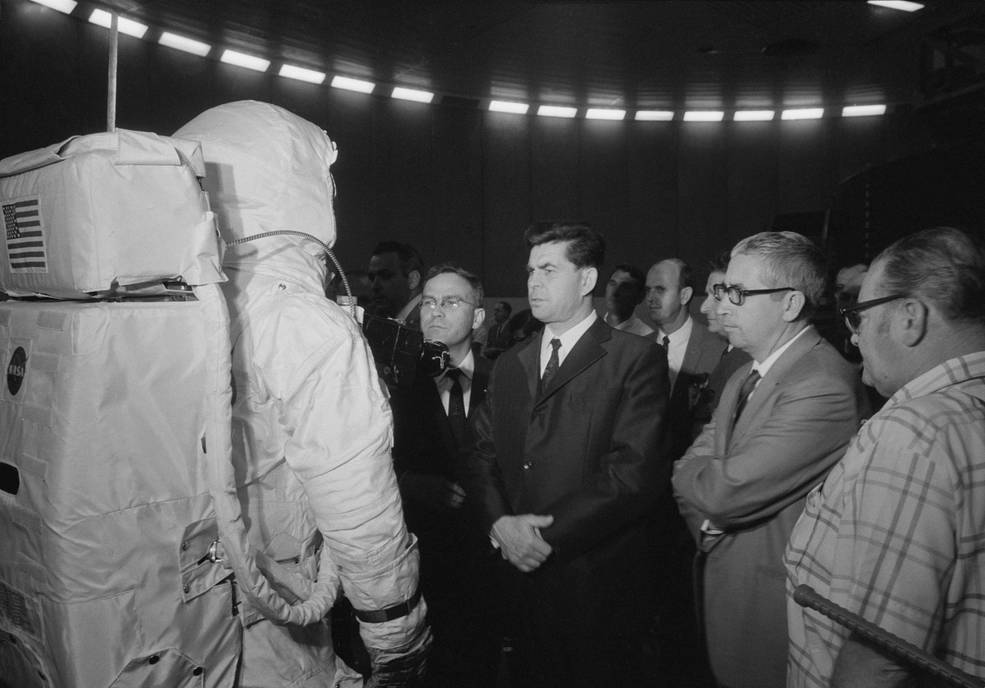
Left: Beregovoi (on couch) and Swigert in the CM simulator. Right: Beregovoi (at center) and Feoktistov (arms crossed) examine a US spacesuit.
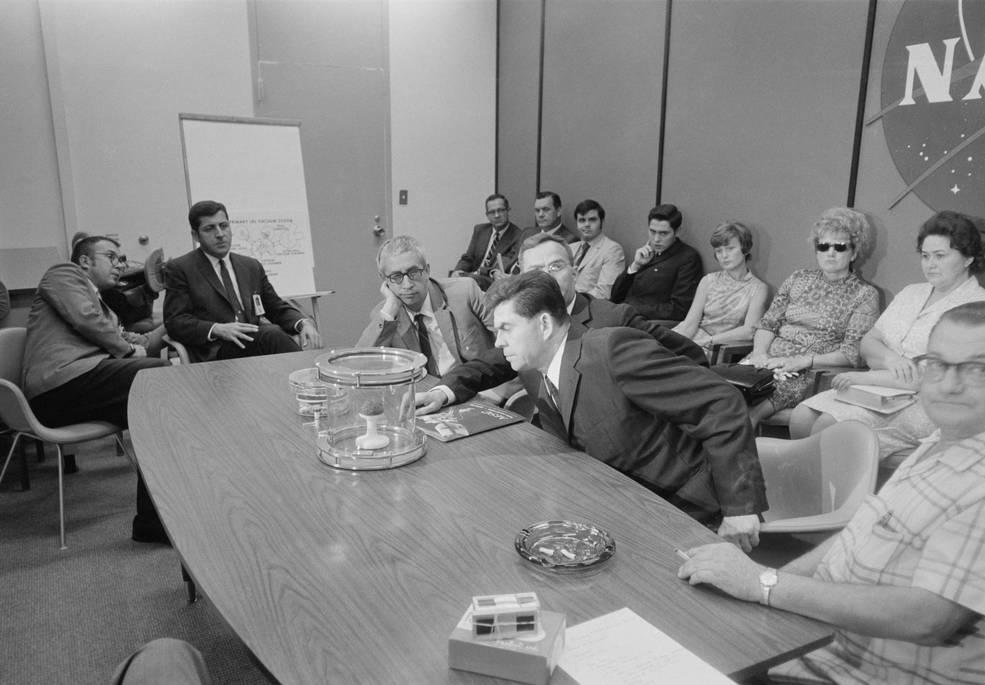
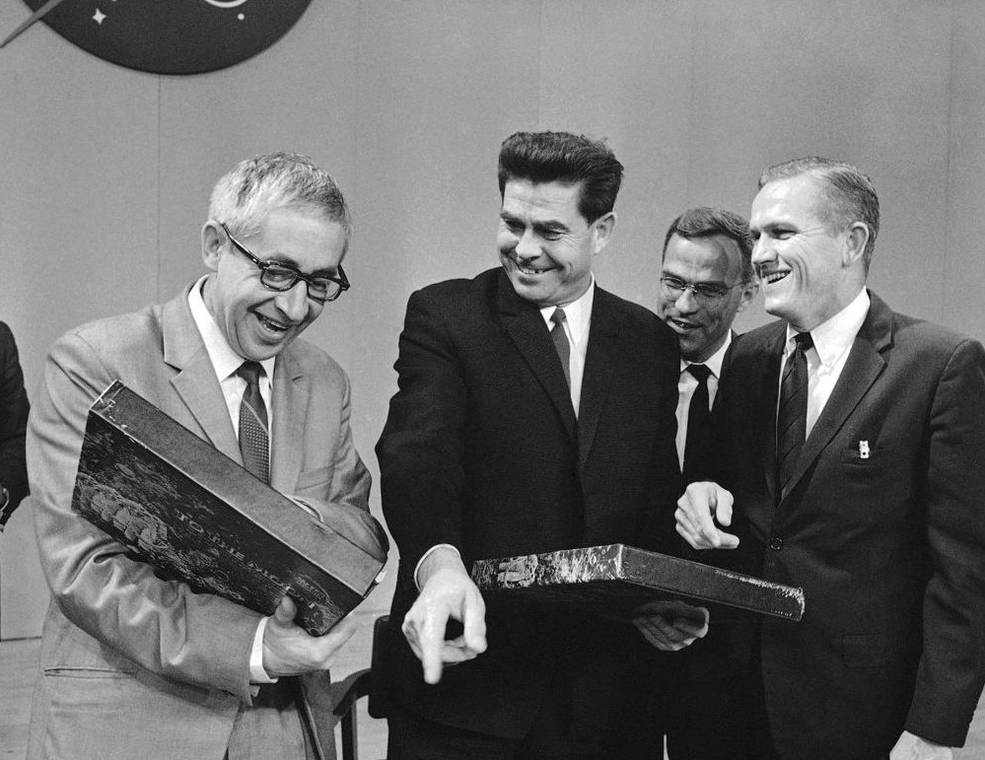
Left: At MSC, Feoktistov (at table, left) and Beregovoi examine a Moon rock returned by Apollo 11. Right: Feoktistov (left), Beregovoi, and Borman share a laugh during a gift exchange of a book and record of the first Moon landing, following the press conference at MSC.
From Houston they flew to California, with the first stop in Los Angeles. The cosmonauts, accompanied by astronaut Eugene A. Cernan, toured the NAR plant in Downey, where they viewed the Apollo 11 CM Columbia, still undergoing postflight inspections after its historic journey to the Moon. They sat inside the Apollo 14 CM undergoing final assembly and inspections prior to shipping to KSC in November. Beregovoi and Feoktistov paid a brief visit to JPL in Pasadena, where scientists provided them with the latest results from the Mariner 6 and 7 Mars flyby missions. They attended the annual meeting of the American Institute of Aeronautics and Astronautics in Anaheim, where George M. Low received the Louis W. Hill Space Transportation Award for his leadership as the Manager of the Apollo Spacecraft Program Office.
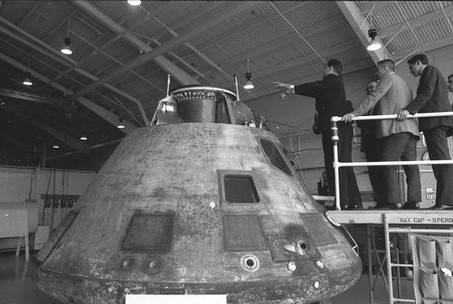
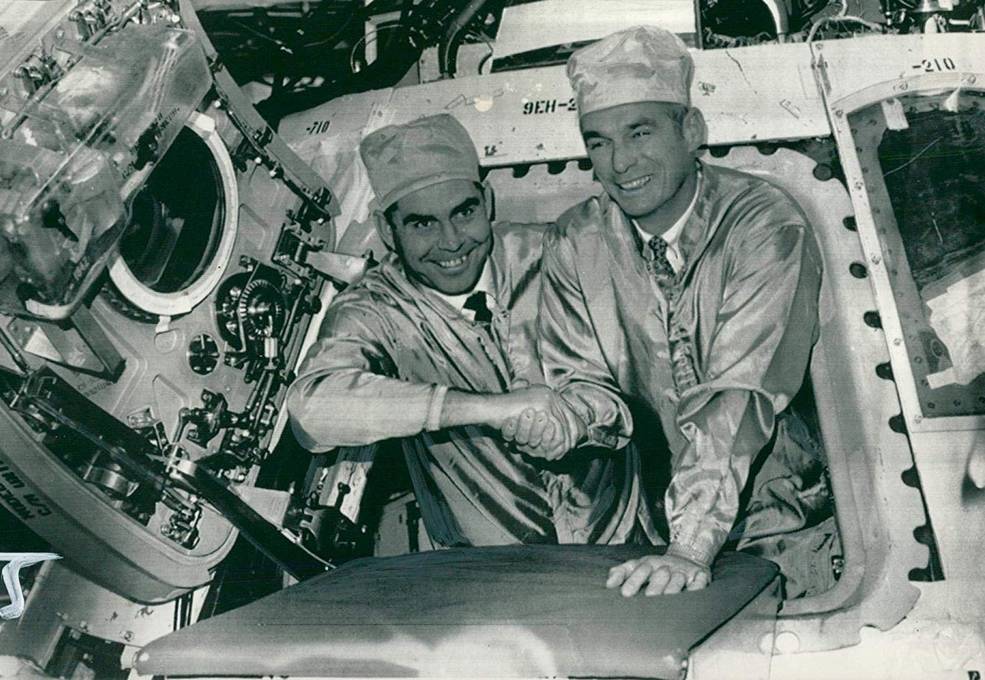
Left: Beregovoi and Feoktistov examine the Apollo 11 CM at NAR. Right: Beregovoi and Cernan inspect the Apollo 14 CM at NAR. Credits: NAR.
For entertainment, the two cosmonauts visited Disneyland, enjoying the Flight to the Moon and the Rocket Jets rides, clowning with life size Disney characters, and donning Mickey Mouse ears, and then headed south to San Diego where Cernan accompanied them to a San Diego Chargers-Oakland Raiders game, trying to explain the subtleties of American football to the soccer-loving cosmonauts. Beregovoi, with perhaps Cernan’s explanations losing something in translation, summed up the game’s action as, “All fall down, all get up, all fall down.” At a party in their honor at the LaJolla mansion of Teledyne-Ryan Aeronautics executive Frank G. Jameson, Beregovoi tried his hand as an American barbecue chef. Actor Kirk Douglas invited them to a star-studded party at his house in Hollywood.
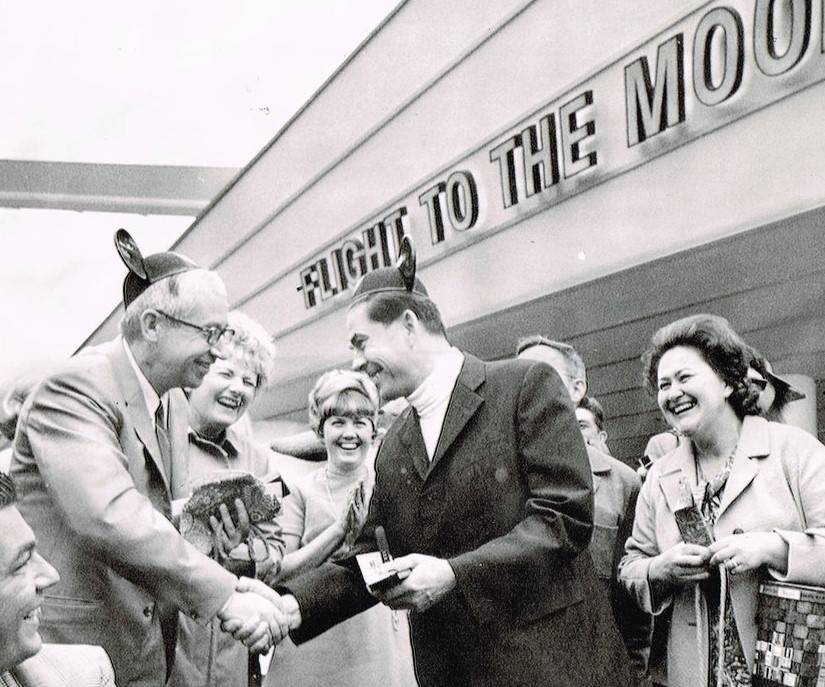
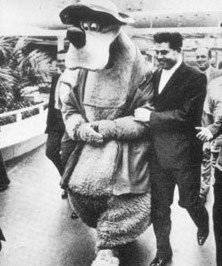
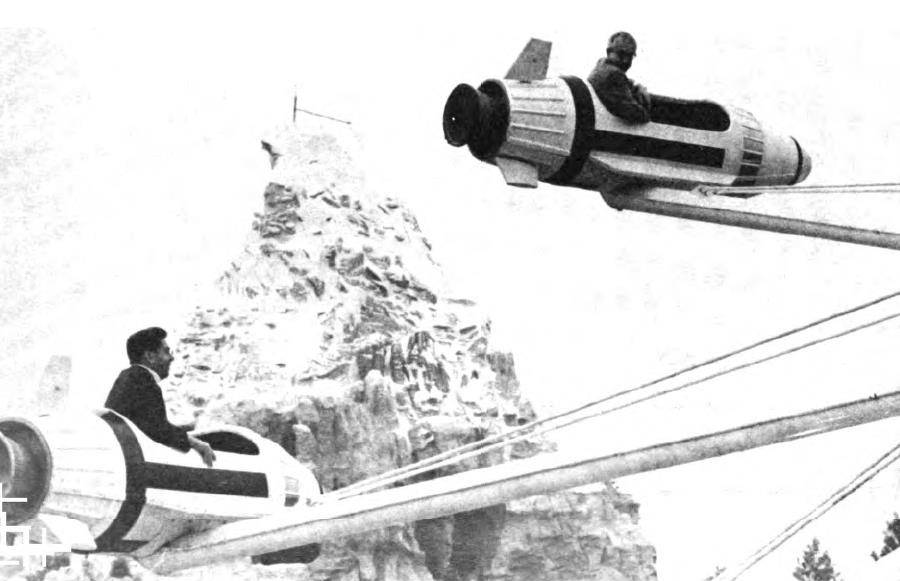
Three scenes of Feoktistov and Beregovoi at Disneyland in Anaheim, California. Left: Wearing Mickey Mouse ears outside the Flight to the Moon ride. Middle: Beregovoi clowning with Brer Bear. Right: Cosmonauts on the Rocket Jets ride. Credits: Disney, AP Photos, Soviet Life.
For the next leg of their journey, Beregovoi and Feoktistov travelled to San Francisco, where Beregovoi rode a steer at the Grand National Rodeo and Livestock Show in San Francisco’s Cow Palace, much to Cernan’s amusement. Accompanied by astronaut L. Gordon Cooper, the duo toured Muir Woods National Park in Mill Valley and flew to Arizona to ride mules in the Grand Canyon. Then it was off for a brief visit to Detroit, Michigan, where Beregovoi and Feoktistov toured the General Motors Technical Center and test drove experimental cars. From there, they travelled to Virginia, visiting historic colonial Williamsburg, touring the College of William and Mary, and exploring the Lunar Landing Research Facility at the NASA Langley Research Center, accompanied by astronaut William A. Anders.
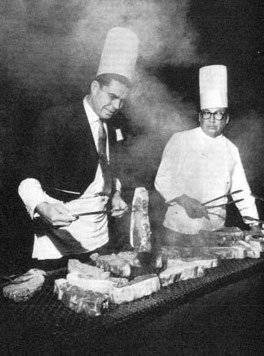
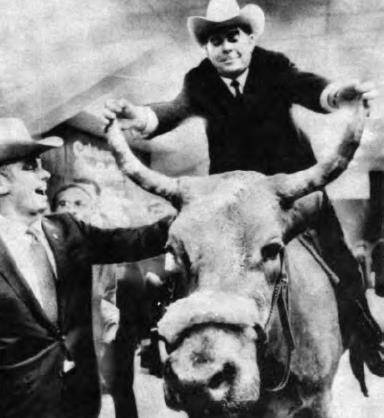
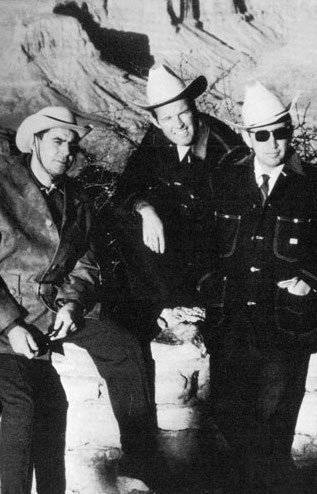
Left: Beregovoi trying his hand at barbecue in LaJolla, California. Middle: Beregovoi riding a steer at the Grand National Rodeo and Livestock Show in San Francisco’s Cow Palace. Right: Beregovoi (left), Cooper, and Feoktistov in the Grand Canyon. Credits: Soviet Life.
On Nov. 2, it was back to Washington, DC, to view the first Moon rock on public display at the Smithsonian Institution. NASA Administrator Thomas O. Paine joined them for an evening reception at the Soviet embassy where they discussed future space plans. The next day, they returned to New York for a brief visit at the United Nations with Secretary General U Thant, and then to JFK Airport to catch their return flight to Moscow, where Borman gave them a warm sendoff. During interviews at the airport, Feoktistov said of American astronauts that he met during the two-week visit that he like their “sincerity and hopeful approach to life.” Beregovoi waxed philosophical stating, “Friendship is a force which will help the world conquer space.”
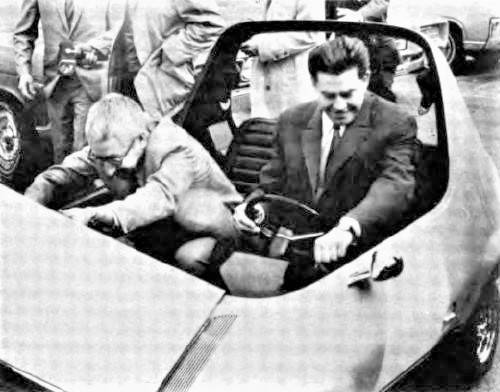
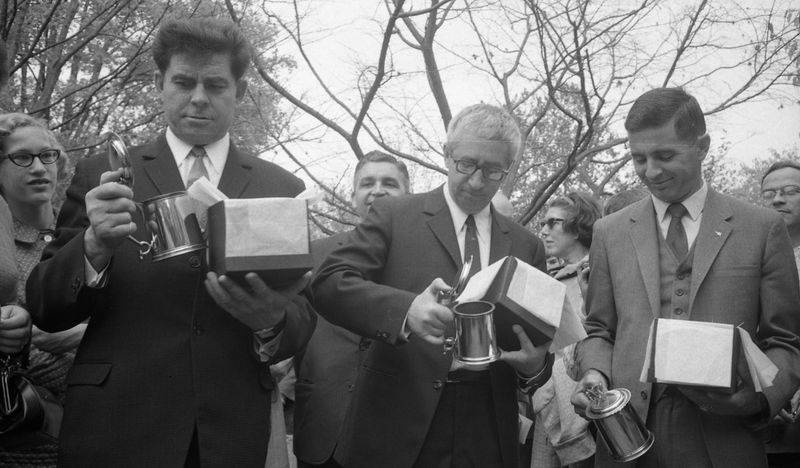
Left: Feoktistov (left) and Beregovoi test drive an experimental car at General Motors Technical Center near Detroit, Michigan. Right: Beregovoi (left), Feoktistov, and Anders examine gifts of pewter tankards in historic Williamsburg, Virginia. Credits: Soviet Life, AP Photos.
These first two tentative but successful reciprocal visits of astronauts and cosmonauts in 1969 led to the visit of Apollo 11 astronaut Neil A. Armstrong to the Soviet Union in May and June 1970 and the next visit of cosmonauts, Soyuz 9 crew members Andriyan Nikolayev and Vitali Sevastyanov, to the United States in October 1970. Around this time, the first joint meetings between top spaceflight managers of the two countries began, eventually leading to the 1972 agreement to carry out the Apollo-Soyuz Test Project in July 1975, a docking between an American Apollo and a Soviet Soyuz spacecraft, with mutual crew exchanges during two days of joint activities.
























